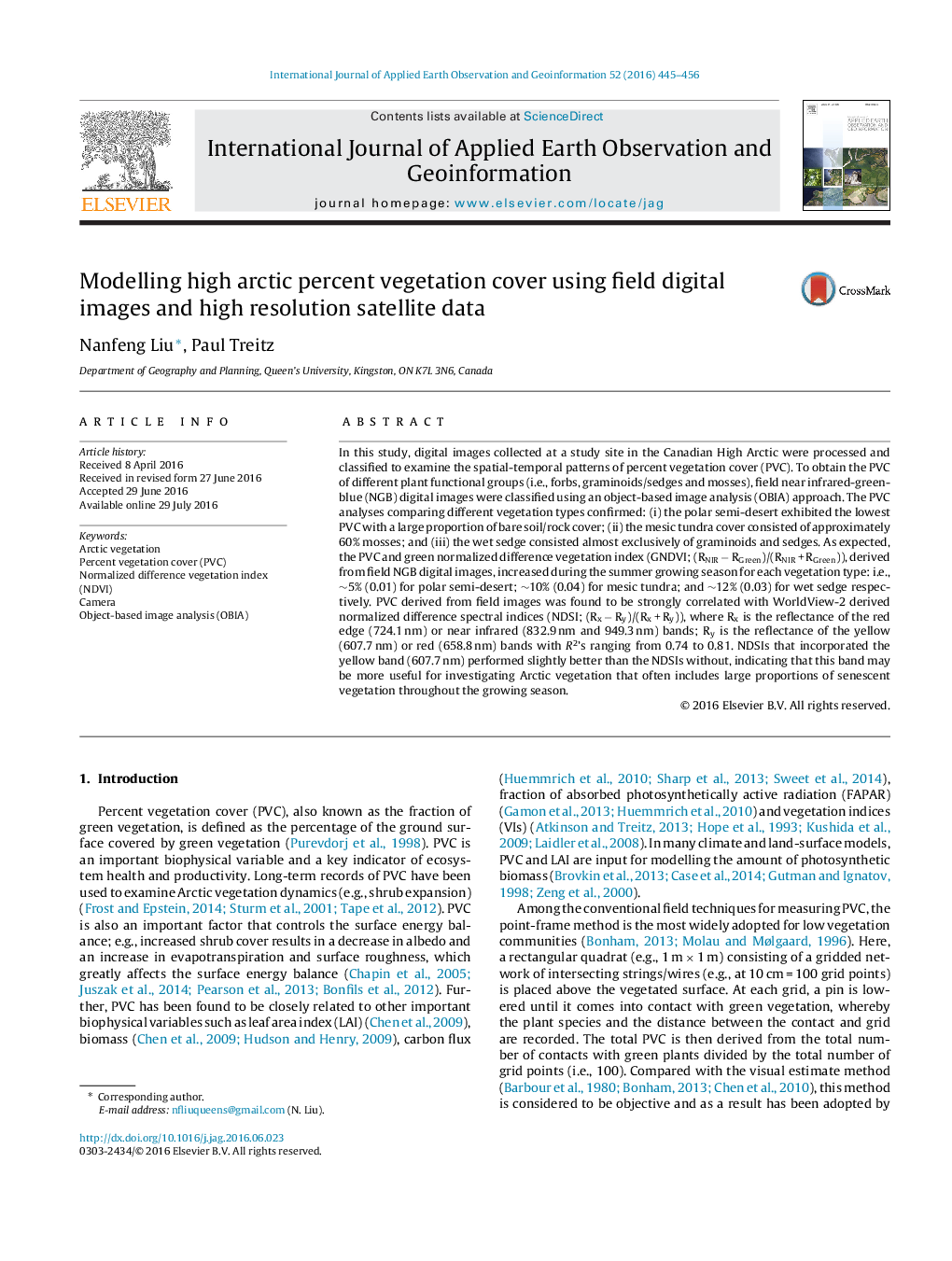| Article ID | Journal | Published Year | Pages | File Type |
|---|---|---|---|---|
| 6348504 | International Journal of Applied Earth Observation and Geoinformation | 2016 | 12 Pages |
Abstract
In this study, digital images collected at a study site in the Canadian High Arctic were processed and classified to examine the spatial-temporal patterns of percent vegetation cover (PVC). To obtain the PVC of different plant functional groups (i.e., forbs, graminoids/sedges and mosses), field near infrared-green-blue (NGB) digital images were classified using an object-based image analysis (OBIA) approach. The PVC analyses comparing different vegetation types confirmed: (i) the polar semi-desert exhibited the lowest PVC with a large proportion of bare soil/rock cover; (ii) the mesic tundra cover consisted of approximately 60% mosses; and (iii) the wet sedge consisted almost exclusively of graminoids and sedges. As expected, the PVC and green normalized difference vegetation index (GNDVI; (RNIR â RGreen)/(RNIR + RGreen)), derived from field NGB digital images, increased during the summer growing season for each vegetation type: i.e., â¼5% (0.01) for polar semi-desert; â¼10% (0.04) for mesic tundra; and â¼12% (0.03) for wet sedge respectively. PVC derived from field images was found to be strongly correlated with WorldView-2 derived normalized difference spectral indices (NDSI; (Rx â Ry)/(Rx + Ry)), where Rx is the reflectance of the red edge (724.1 nm) or near infrared (832.9 nm and 949.3 nm) bands; Ry is the reflectance of the yellow (607.7 nm) or red (658.8 nm) bands with R2's ranging from 0.74 to 0.81. NDSIs that incorporated the yellow band (607.7 nm) performed slightly better than the NDSIs without, indicating that this band may be more useful for investigating Arctic vegetation that often includes large proportions of senescent vegetation throughout the growing season.
Related Topics
Physical Sciences and Engineering
Earth and Planetary Sciences
Computers in Earth Sciences
Authors
Nanfeng Liu, Paul Treitz,
